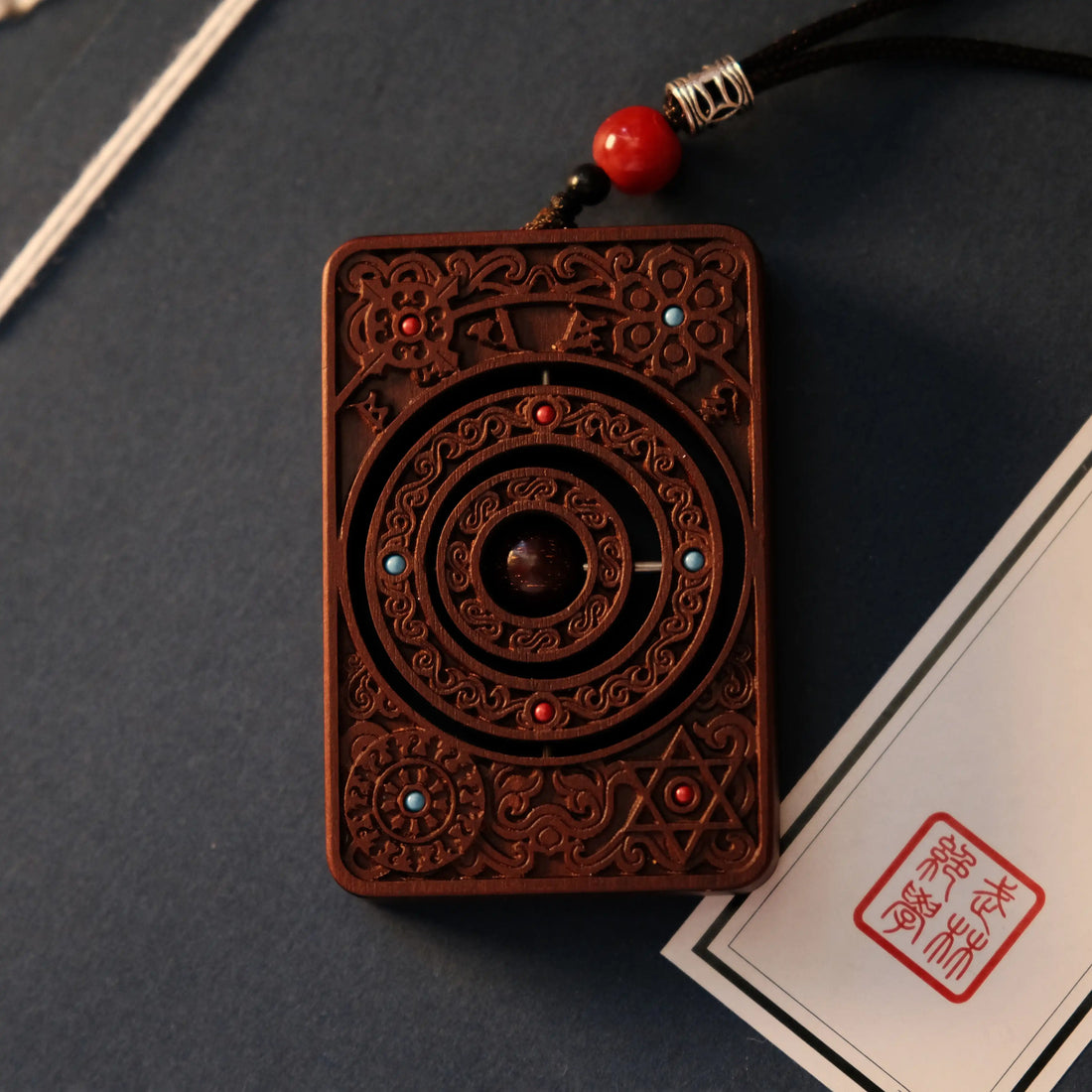
Sandalwood and Traditional Chinese Culture: Why Is It Used in Taoist Ornaments?
Share
Among the many materials used in traditional Chinese ornaments, sandalwood stands out as a symbol of quiet elegance and spiritual calm. Particularly within Taoist culture, sandalwood is not just a material—it represents continuity, refinement, and a connection with nature.
1. What is sandalwood, and why is it so valued?
Sandalwood refers to a range of aromatic woods, with “old mountain sandalwood” (lao shan tan) being especially treasured. It is known for its fine grain, oily texture, and natural warm fragrance. Ancient Chinese texts describe sandalwood as “worth its weight in gold.”
In the Ming Dynasty’s Compendium of Materia Medica, sandalwood was praised for its calming and warming qualities: “Sandalwood: warms the center and relieves pain, warming but not drying.”
2. Symbolic meaning in Chinese tradition
In Confucianism, Buddhism, and Taoism, sandalwood often symbolizes purity, constancy, and harmony with nature. - Endurance: Its durable and unyielding nature symbolizes unshakeable belief. - Inner clarity: Its scent is thought to calm the mind and aid in meditation or spiritual focus.
3. Sandalwood’s role in Taoist tradition
Taoism emphasizes harmony with nature—“Dao follows nature” (道法自然). Sandalwood, with its minimal need for processing and its innate beauty, fits this ideal perfectly.
a) As a material in Taoist ritual tools
In sacred Taoist mountains like Longhu Shan and Qingcheng Shan, sandalwood is often used for creating wooden talismans, charms, and spiritual tools.
The Daozang (Taoist Canon) records: “To guard the household, use aged sandalwood to preserve pure energy.” While not every ornament is a ritual object, this reveals the esteem sandalwood holds in Taoist practice.
b) Common types of Taoist sandalwood ornaments
· Bagua pendants: Symbolizing balance of yin and yang.
· Tianshi (Heavenly Master) talismans: Worn by locals near Longhu Shan for symbolic protection.
· Sandalwood bead bracelets: Often crafted in odd-numbered sets (e.g., 9, 11, 13) and combined with materials like copper or agate.
4. Sandalwood in modern design
Even today, sandalwood ornaments carry an “Eastern spirit.” Many wearers are drawn not just to the material, but to the quiet cultural lineage it represents.
a) Material fusion
· With brass: A warm and tactile contrast
· With jade: Evokes the balance of hard and soft in classical Chinese aesthetics
b) Cultural integration in design
· Incorporating Taoist symbols like cloud patterns or thunder motifs
· Packing inspired by Longhu-Mountain scenery and Daoist philosophy
